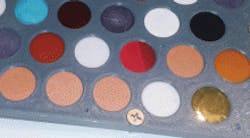|
Authored by:
Key points:
Resources: |
Everyone knows the story of the Tempur-pedic mattress. It started out as a pressure-absorbing material developed by NASA in the 1970s to help support astronauts during liftoff. NASA released the technology in the 1980s, and a Swedish company helped further develop the product we see today.
NASA’s labs have been pumping out materials for years. The difference today is NASA is actually making an effort to get these technologies transferred and create the next memory-foam story. Here are a few materials that could launch the next generation of products and solutions.
Shape-memory alloys (SMAs) are alloys which deform at low temperatures and recover to original shape when heated. They are commercially available, but only operate up to 80°C. NASA is trying to boost that to 300°C to allow use of SMAs across more industries and applications.
SMAs are categorized into one of three types depending on how they deform and recover. A passive-type SMA creates force after heating. Active SMAs create force after heating, but are used below their transformation temperature. Superelastic SMAs transform during stress, but work above their transformation temperature.
Regardless of the SMA category, developers say stability is the major challenge. They try to design SMAs that consistently cycle between deformation and recovery. Shape and temperature are two examples. SMAs can deform or recover with a difference as little as 5° or 3mm. The temperature of SMAs fluctuates depending on the material type. SMAs can get hot or cool to the touch during transformation.
Even so, these temperature-sensitive alloys can take the place of sensors or electronics. Commercially available SMAs are currently used to replace circuit breakers and are incorporated in medical applications like stents. The alloys also have a high force per volume/ weight which suits them for compact actuator designs. NASA says a design currently in development uses an SMA to replace a traditional motor/gearbox actuation system which yields a weight savings of 41:1. SMAs deliver multiple stiffnesses and can create enough force to eliminate stand-alone systems like hydraulics and pneumatics.
NASA is also working on structural materials that are lightweight. One material in this category is fiberreinforced foam (FRF). FRF is a foam sandwiched between glass or carbon structural-fiber composite sheets.
The result is a foam-filled fluted sheet much like plastic alternatives to cardboard. FRF is not a new concept, but NASA’s creation is said to act as a better alternative to metal over currently available balsa or PVC-core sandwiches. It is 30 to 40% lighter than metal parts and absorbs the same amount of energy as metallic structures. NASA says the material withstands severe impact and recommends the material for use with dynamic loads.
The material can be a half-inch thick and thicker. It’s possible to customize the size, weight, impact resistance, and noise dampening through use of different types of foam, different types of resins and fibers, and by changing the direction of fibers. FRFs can be made into continuous sheet roll or into continuous snakelike rolls for cylindrical components. The sheets are molded using resin-infusion processes. After completion they can be cut using conventional cutting tools like table saws.
Another area of study for NASA researchers is superpolished metal. A company called Microengineered Metals Inc., Yorkville, Ill., has developed this process which produces surface finishes on aluminum with 5 Å or less root-mean-square roughness. The method includes a proprietary slurry used to polish a 2D or 3D object.
Superpolishing has advantages over normal polishing. Superpolishing creates a supersmooth and highly reflective finish that can eliminate the need to nickel-plate hard-to-polish metals like aluminum.
The proof is in the reflection. When a laser bounces off of a diamondpoint- turned piece of metal, the reflected light shows lines. When reflected off superpolished metal, nearly zero breaks in the light beam are seen by the human eye.
NASA says superpolishing could prove useful for injection molds, optical surfaces, and resonant cavities. The finish is said to reduce surface eddy currents and could potentially improve surface laminar flow due to lessened surface roughness.
|
A galactic material test lab Materials International Space Station Experiment (MISSE-X) is the name, and material testing is the game. The MISSE-X is literally an experiment facility 220 miles above Earth, mounted to the exterior of the International Space Station (ISS). To be exact, it will be robotically installed on the International Space Station ExPRESS Logistics Carrier 2 payload platform. The Space-X Dragon capsule will ferry Modular Experiment Containers (MECs) to and from the ISS. The MECs carry samples of materials and remain in space from six months to three years. MISSE-X is not a new experiment, MISSE 1 and 2 were deployed in August of 2001 and weren’t retrieved until July 2005. NASA says the MISSE-X will include new enhancements, including near realtime experiment monitoring, daily photographing of samples in ‰ ight, and expanded accommodations to house more — and more-complex — experiments. The MISSE-X team is also developing plug-and-play mechanical and avionics systems to more quickly and economically swap in new experiments. NASA says materials on the MISSE-X will endure extreme levels of solar and charged-particle radiation, atomic oxygen, hard vacuum, temperature extremes, and contamination, hopefully giving researchers new insight into developing durable materials for spacecraft, ‰ ight hardware, and even astronaut clothing. MISSE-X will be deployed in 2014. |
About the Author
Lindsey Frick
Associate Editor
Lindsey has been an Associate Editor for Machine Design since 2012. She holds a Bachelor of Science in mechanical engineering from Cleveland State University. Prior to joining Penton, she worked in product design, packaging, development and strategy, and manufacturing. She covers the materials market and other areas of interest for design engineers such as 3D printing and methods to operate efficiently.
